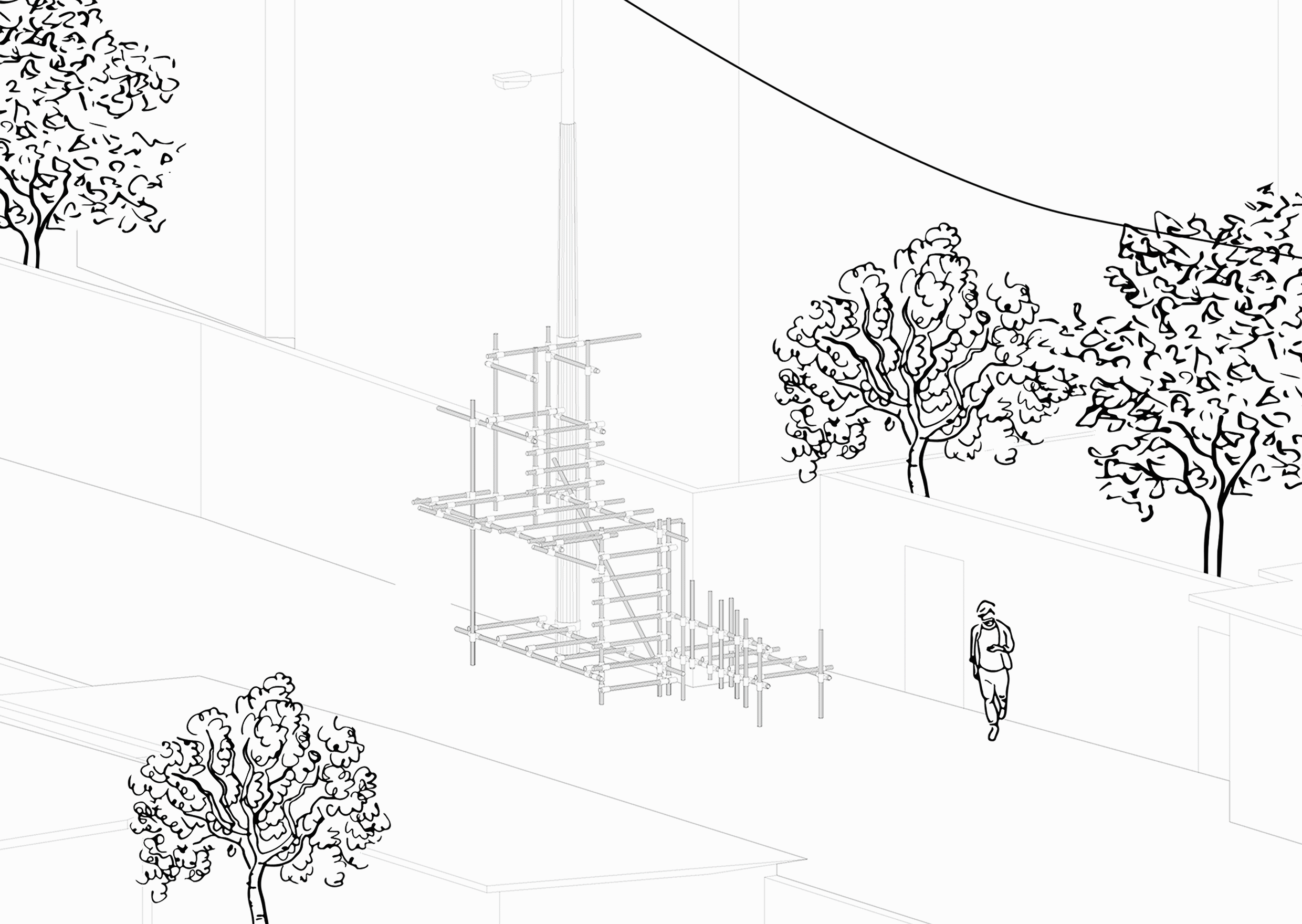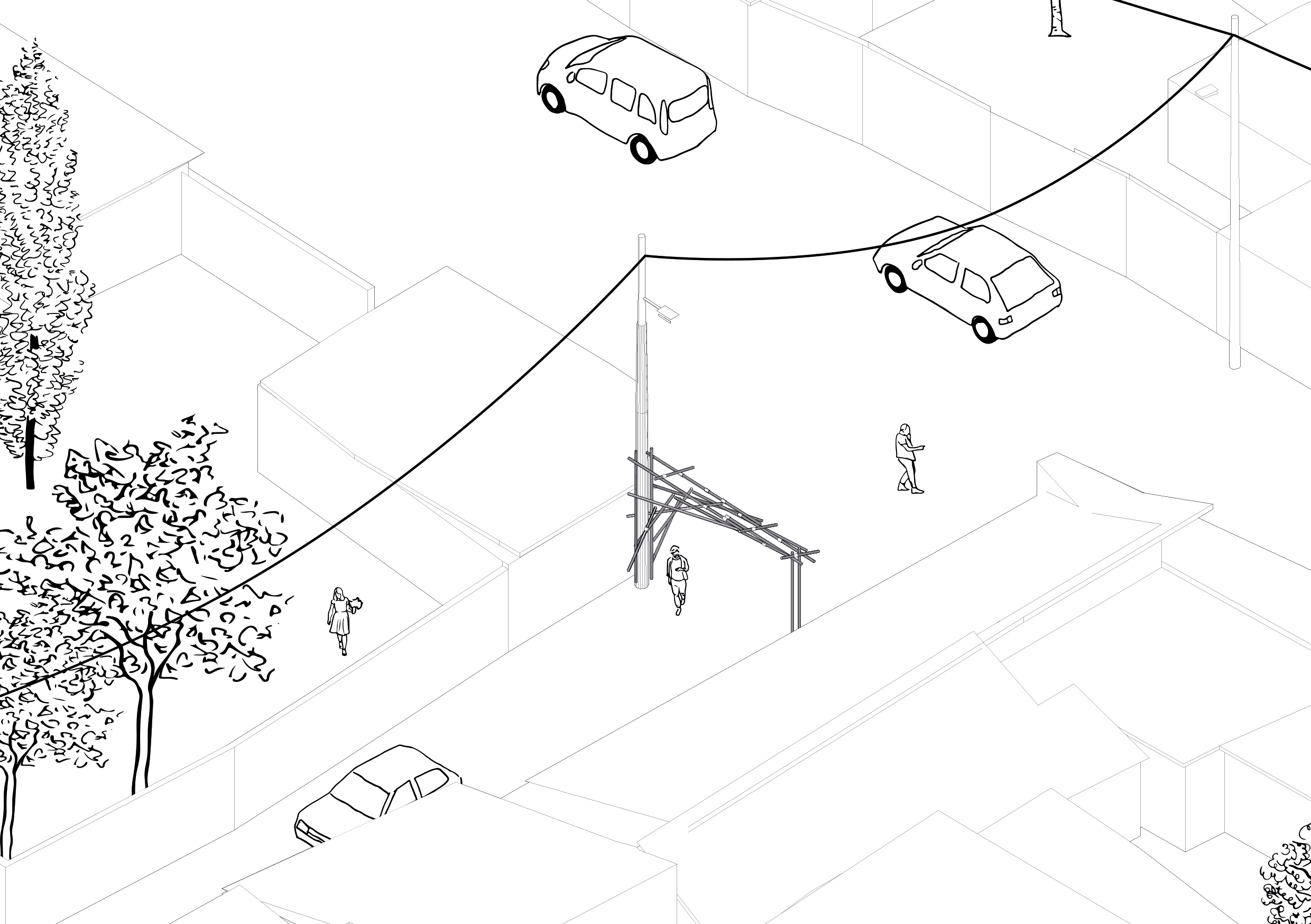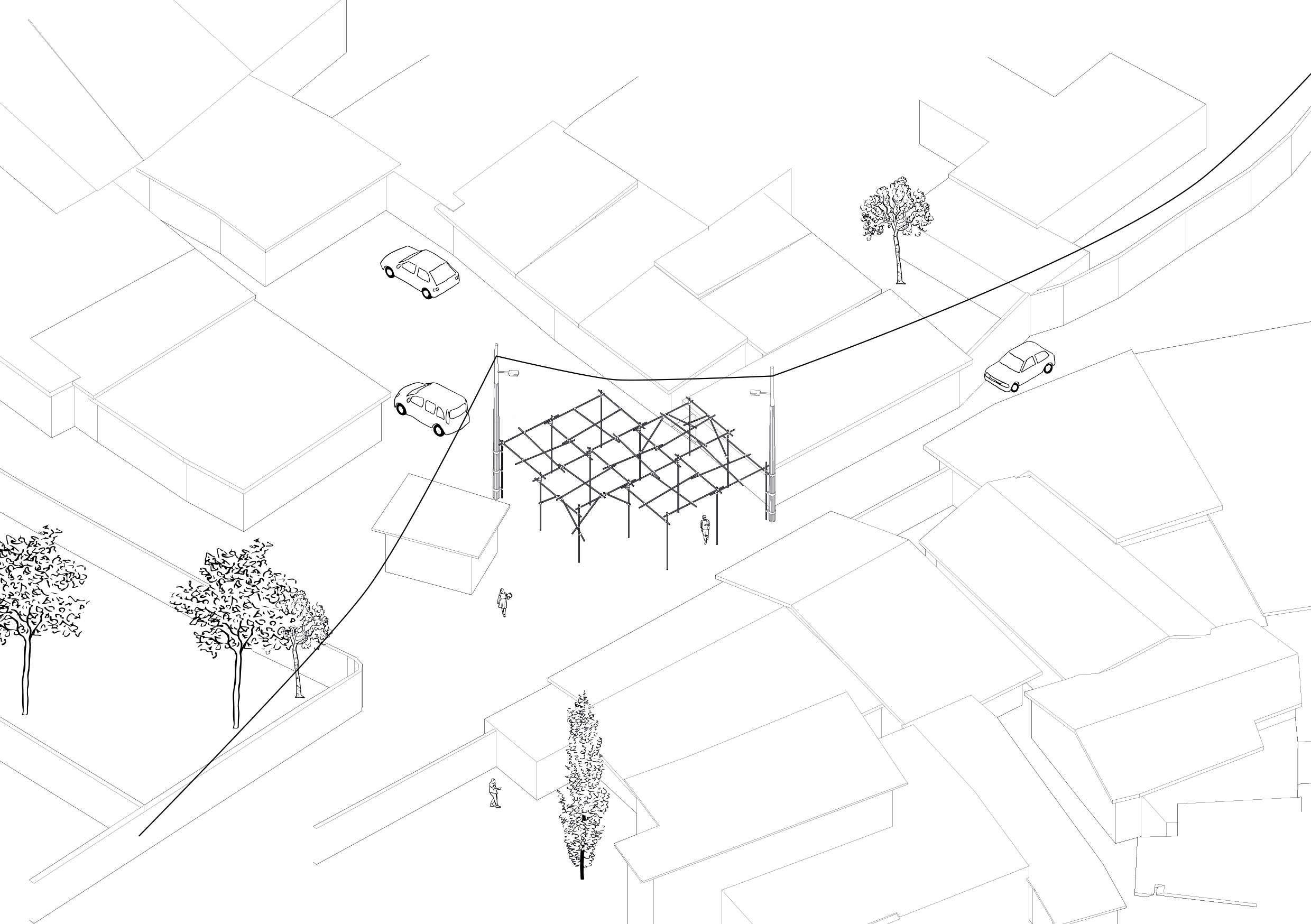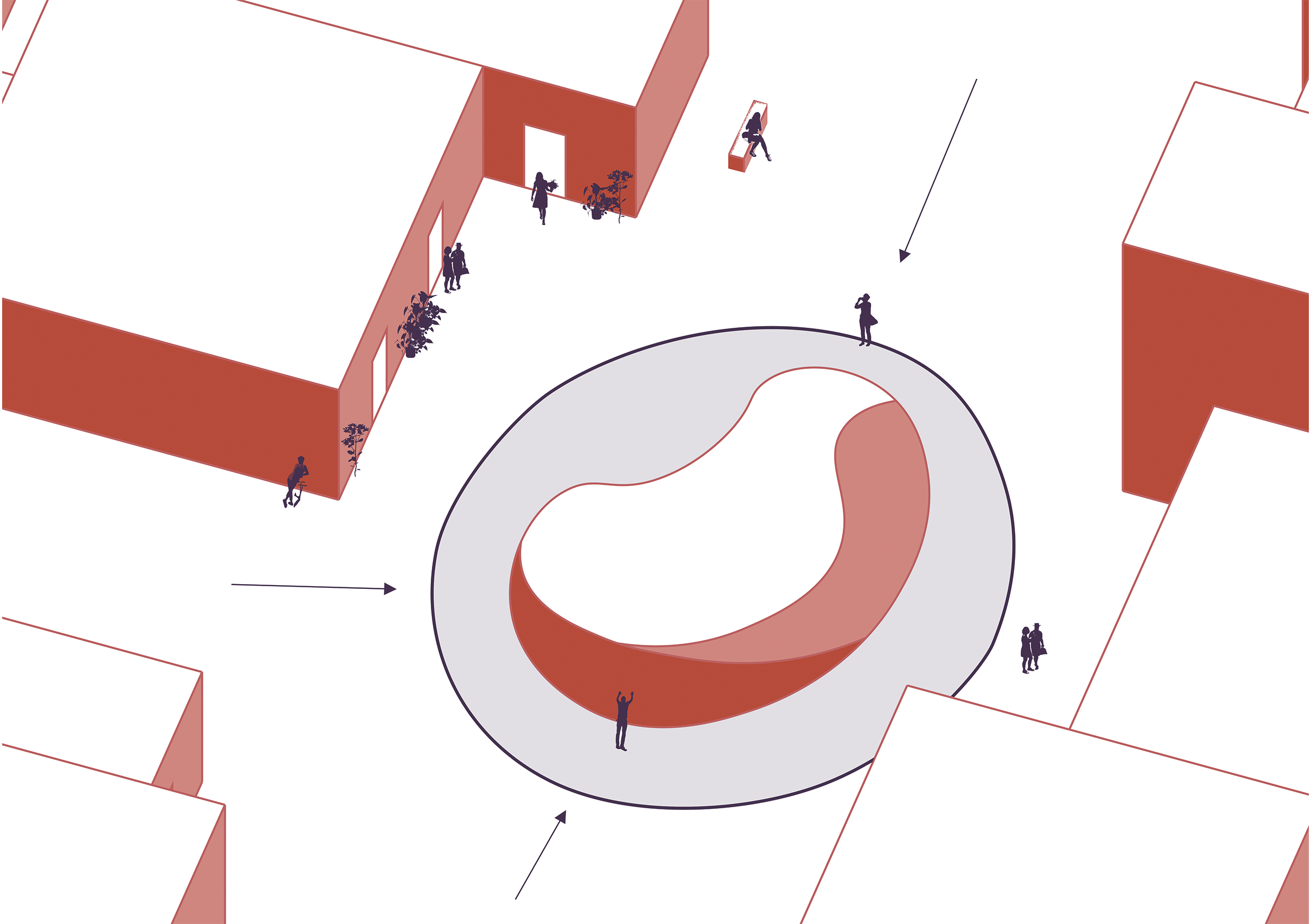








An Incentive for Negotiation
Just de Bruin
One of the biggest forces behind active and friendly environment is the social life itself. We are attracted to activities of other people and it becomes an incentive for ourselves to participate in one way or another, even if it is just observing. Therefrom life becomes a self-reinforcing process. As Jan Gehl claims “something happens because something happens because something happens.” The adhocist self-made structures to be found in the low-rise area of the Akademy City in Tbilisi reflect upon the phenomenon of life as a self-reinforcing process. The appropriations made through assemblages of different elements form a structure to provide immediate necessities and affordances. Therefore, creating a vibrant atmosphere caused by the readability of the purpose.
At the same time the inhabitants are very fond of their own privacy: all the communal spaces and private terrains are secluded and closed off by self-made walls. The passer-by, unfamiliar with the processes that lie behind those fences, becomes estranged to the place. Although you can sense the freedom the adhocist foundation provides to the life in-between you can never really grasp it for yourself. The downside of this adhocism is the aesthetics of temporality: different elements put together gives an incentive for change and adjustment. In combination with the seclusion of the community caused by the endless walls it becomes fragile to colonization by high-rise buildings, which are through their impersonal characteristics a threat to a sustainable life between the buildings. To prevent these neighborhoods being overtaken by the new high-rise, the threshold should become more ambiguous and inviting to the public realm.
As such the true identity of these neighborhoods will become available to a broader public and develop a greater sentiment and affection. Therefore, providing these places with a more sustainable identity.
The utility poles within the neighborhood form an existing superimposed infrastructure and create a narrative for different interventions that will enhance an incentive for further appropriation within the public space. Thus, establishing a connection with a bigger crowd and in that way, hopefully arise a deeper emotional connection and a more sustainable future for these low-rise building blocks.

